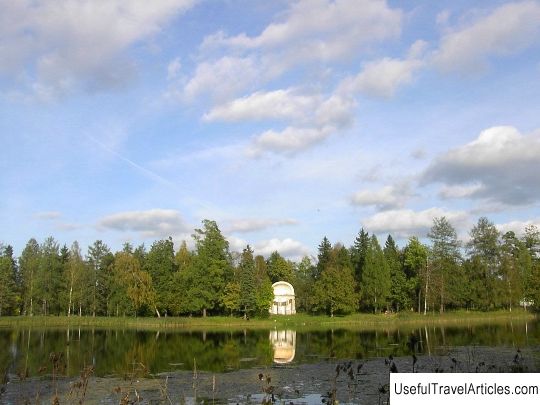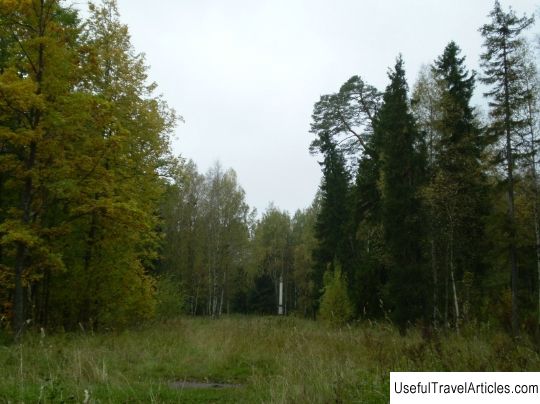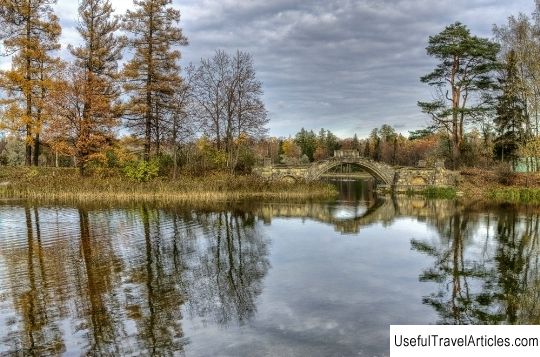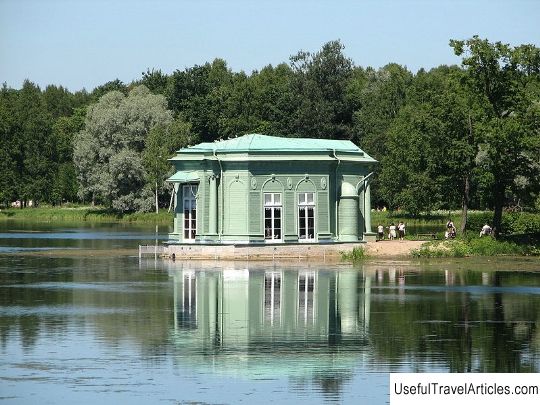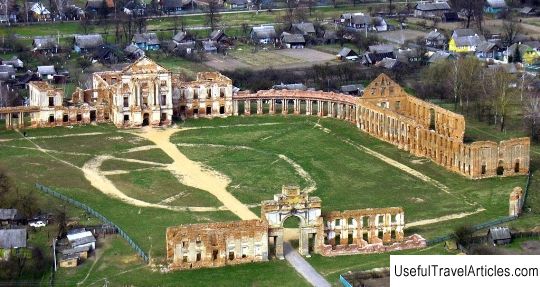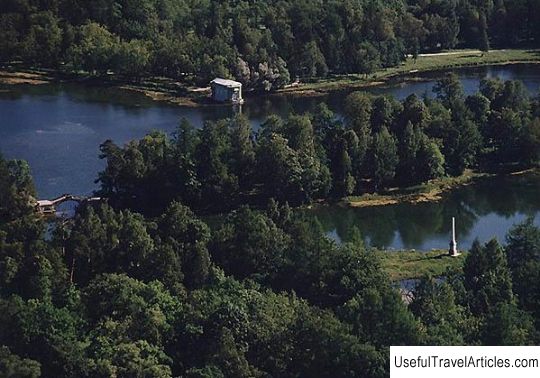Eagle Pavilion in the Palace Park description and photos - Russia - Leningrad region: Gatchina
Rating: 8,8/10 (772 votes) Eagle pavilion in the Palace Park description and photos - Russia - Leningrad region: Gatchina. Detailed information about the attraction. Description, photos and a map showing the nearest significant objects. Photo and descriptionIn Gatchina, in the Palace Park, there is the Eagle Pavilion, which is also called the Temple. This park structure is a cultural heritage site of Russia. The pavilion is a round rotunda with a height of over 9 meters. It is located on one of the islets of the White Lake in the Palace Park. Temple is located on a small hill. It is installed on a stylobate (round stone platform), which can be climbed by any of the three adjacent stairs. Despite the fact that the Pavilion is rather small, a deceptive impression of its monumentality is created. From the front-front side, the Temple is open, and the back semicircular wall is blind. The Eagle Pavilion is crowned with a semi-dome decorated with stucco molding. The front part is decorated with five Tuscan columns of gray marble, located in a semicircle on pedestals. The colonnade ends with an entablature, which smoothly transitions to the rear blank semicircular wall. The outside walls are decorated with a stucco frieze of floral ornament. The colonnade is crowned by a white marble eagle holding a shield with the image of the monogram of Emperor Paul I. The back wall of the Temple has niches for statues. A park perspective is clearly visible from the Eagle Pavilion, which is completed by the Eagle Column. The architect of the Pavilion has not been precisely established. There is an assumption that the project was developed by Vincenzo Brenn. The date of construction is also unknown, and the first mention of this architectural structure dates back to 1792. In the late 18th - early 19th centuries, the Pavilion was called Temple or Temple, from the French "temple" - a temple, a round gazebo. The Eagle Pavilion was first restored in the 40s of the 19th century. Then the strong dilapidated rafters of the half-dome were renewed. In 1845 the stylobate was restored and strengthened. During the Great Patriotic War, a high-explosive bomb exploded near the Eagle Pavilion. Most of the dome collapsed from this, and two columns fell into the lake. The restoration of the Pavilion was carried out in 1969-1970. Interesting legends associated with the Gatchina Palace. According to the most famous, the ghost of the late Emperor Paul sometimes wanders the dark galleries of the palace. But the other is connected with the Temple. It says that one day Paul, while hunting in the park, fell into an eagle. In the place where the emperor fired that shot and the Eagle Pavilion was erected, and in the place where the bird fell, the Eagle Column was built. However, this story has nothing to do with the truth. The fact is that the column was delivered to Gatchina in 1770, at the time of Grigory Orlov, and the Pavilion was erected approximately in 1796. Most likely, the Column of the Eagle was a direct allusion to the coat of arms of the Orlov family, in which this bird was captured. And the eagle on the Pavilion allegorically symbolized the power of Emperor Paul. In addition, in the notes of the traveler H. Muller there is a story about the Eagle's Column and the Eagle Pavilion. In it, he cites another version of the legend: Grigory Orlov shot a bird while in the rotunda. This is obviously the first version of the legend. And he is not connected with Paul, but with the first owners of these places, for whom both the palace and the park were built. Truth and its veracity can be doubted, since the distance from the Pavilion to the Column is more than 400 steps. And this distance was irresistible for weapons of that time. The reason for the origin of the legend also remains unknown. Perhaps it is connected with the desire to create a certain local patron eagle. It is known that the design of the Eagle Pavilion remained unfinished. It should be remembered that it was originally called the Temple. It was no accident. It was planned to install sculptures of the god of light Apollo in the niches and, according to one version, two figures of women-goddesses, and according to the other, men-gods. There is also an opinion that figures of the great poets and philosophers of antiquity should have stood in the Pavilion. This was to become a symbol of the rise of art under Paul I.       We also recommend reading Massandra winery description and photo - Crimea: Yalta Topic: Eagle Pavilion in the Palace Park description and photos - Russia - Leningrad region: Gatchina. |
